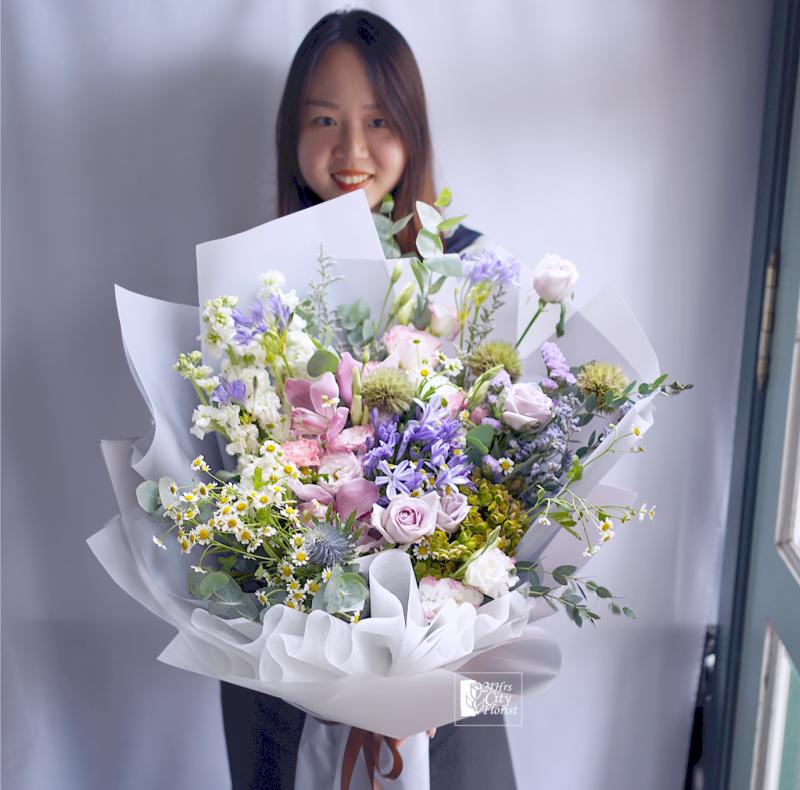
Flower bouquets are one of those gift staples that, despite being relatively mainstream, cannot really go too wrong. Unless we choose a flower unbefitting of an occasion, flower bouquets could be one of the safest bets for the clueless gift giver. Yet it is this very convenience of bouquets that could potentially make one appear thoughtless and overly casual with our choice of gifts. This is definitely a downfall that we want to avoid – why spend such amounts on a gift that would make you look bad? This however does not mean we give up on flower bouquets – after all, flowers are one of the most beautiful gifts that has endured the test of time. What we need to do, is ensure that we are making a bouquet with sincerity. It does pay off to spend some effort picking the right combination of flowers, with the appropriate symbolizations, that can best convey your thoughts to the receiver. With the humongous variety of flowers available, it is not difficult to customize your bouquet and make it unique to your receiver. In this article, we will introduce 10 less common flower types that you can consider including in your bouquet delivery to make it stand out.
1. Allium
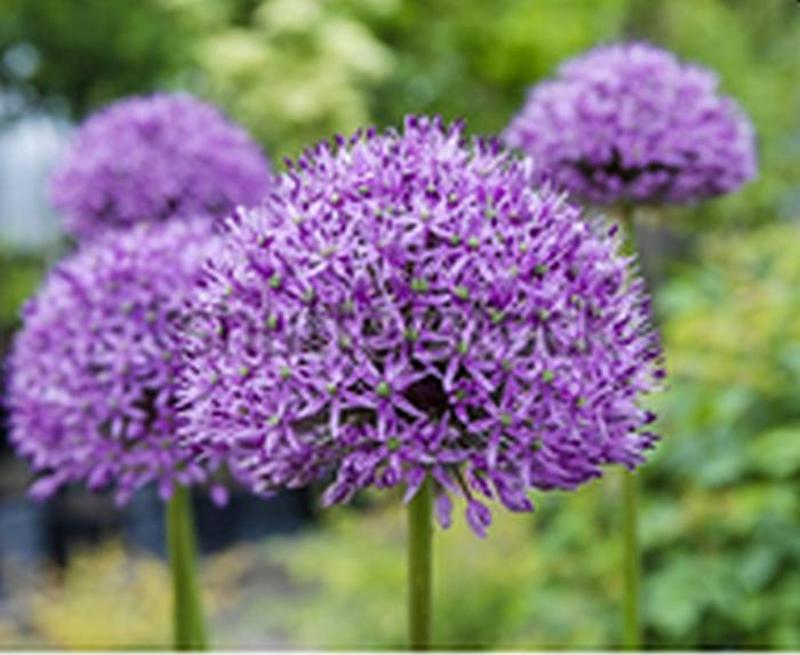
Allium flowers are actually the flowers of an onion plant. But fear not, as the flowers themselves do not smell like onions. The smell only appears if you crush the leaves and flowers. Native to southwestern Asia but now grown worldwide, the Allium flower was used extensively by ancient Egyptians in their drawings and carvings. Alliums essentially look like a fluffy ball of tiny flowers, and this led the ancient Egyptians to associate thee spherical shape of the flower with the universe. In modern use, the flower is thought to represent good fortune and prosperity. Colours of this flower can range from white, purple to blue, are easy to grow, and bloom well in full sun. However, they bloom best from late spring to early summer, and thus are not be available all year round. They are however extremely practical due to their long vase life of 14 days, as hence are frequently used as ornamental plants. Dried allium petals are also a great addition to bouquets.
2. Tanacetum
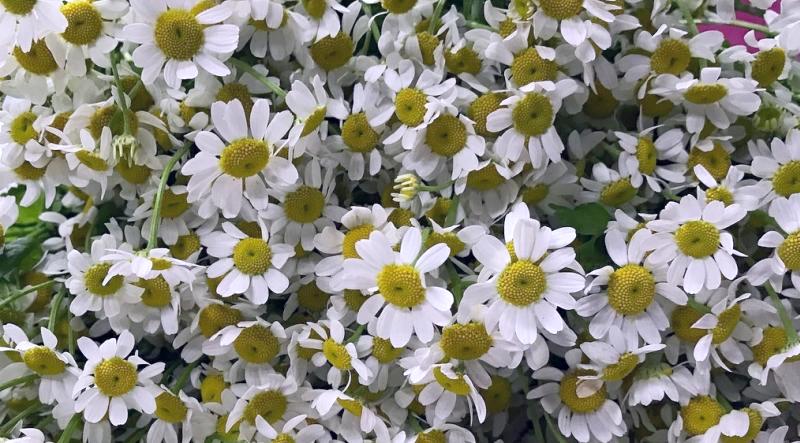
Native to western and central Asia, the Tanacetum is a daisy-like flower that is extremely joyful to look at. The word ‘Tanacetum’ is actually derived from an altered form of the Greek word ‘athanasia’, which means immortality, a reference to the long-lasting nature of these flowers. Tanacetums, also known as Matricaria are a symbol of health, immortality and resistance, and were even used as embalming herbs in the past. Tanacetums can be found from early to mid-Summer. These flowers are low-maintenance ones that bloom well in full sun to partial shade, and have a vase life of 5-10 days.
3. Gomphrena globosa
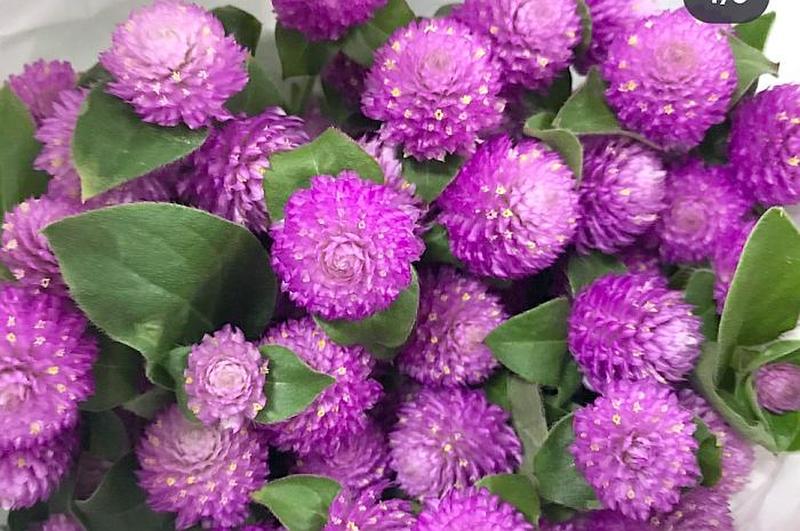
They are also known as Globe Amaranth, with ‘globe’ being a reference to their bulbous shape. These unique flowers are native to central and northern America, but are easy to grow, especially in dry, sunny places. They symbolize everlasting love and immortality, possibly due to their long-lasting nature, another perfect flower for that practical friend! A fun fact – the bright flower heads that we identify with the Gomphrena globosa are actually bracts (modified leaves), while the actual flowers are small and nestled amongst these colourful heads. In flower gifting, these cute blooms can be found in dried bouquets, used as filler flowers for just about any bouquet, and are certainly a hit with wedding bouquets! They have an average vase life of 7 days, but luckily for us, these flowers are available for a longer period than the previous ones – they bloom throughout summer and early fall.
4. Bupleurum
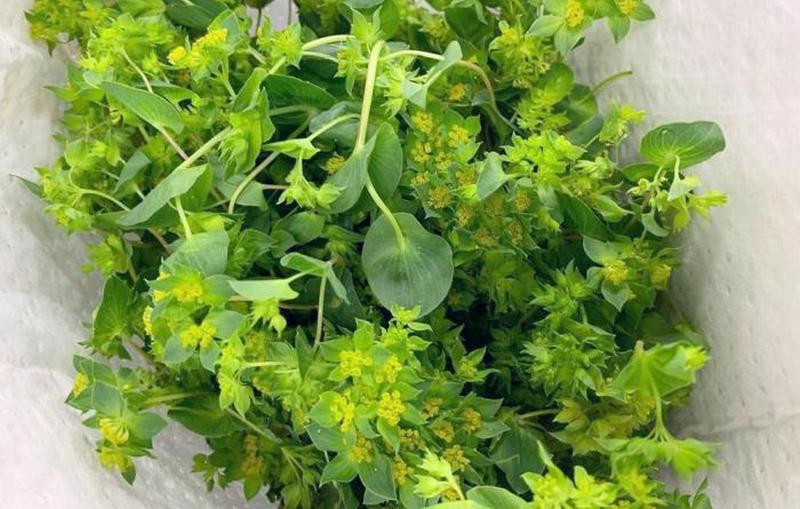
The Bupleurum is a popular flower in China, commonly used for its medicinal purposes. It thus follows that they naturally symbolize wellness and health, and carry with them a wish for the receiver to ‘Get well soon’. Best grown in summer time, they come in clusters of up to 12 florets, each cluster wrapped around by large green, leaf-like petals. The Bupleurum is another flower with a long vase-life, being able to last 7 to 10 days in a vase. As such, they are perfect for vase arrangements, but also a favourite with wedding bouquets, where you can see them being used as filler flowers to add a delicate touch to the arrangement. Drying and preserving them gives you another way to use these extricate petals.
5. Eryngium
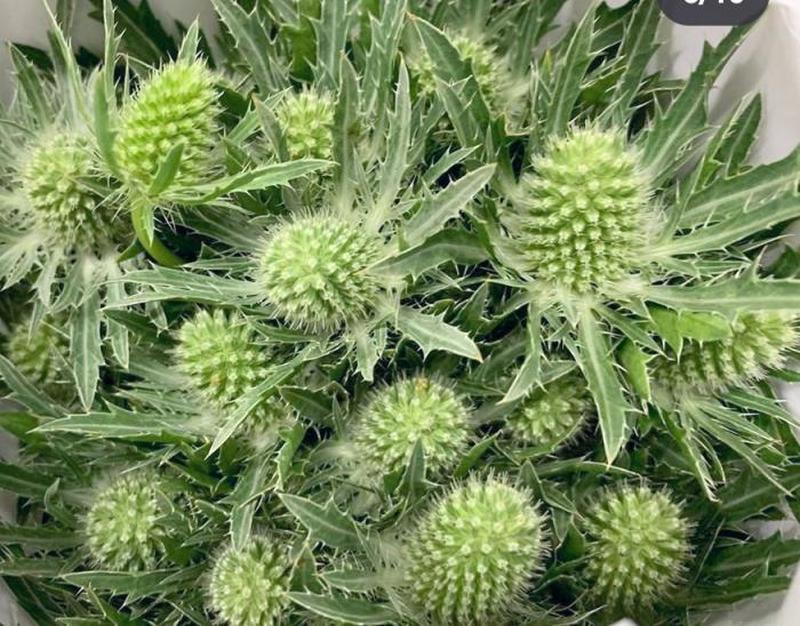
Also known as Sea Holly by the Native Americans who used it to cure rattlesnake bites, these flowers have a unique appearance fitting of its medicinal property. They are commonly found in South America and bloom only during summer till fall. With striking thistle-like silvery blue flower heads centred within a vase of showy bracts, the eryngium is definitely a showstopper. True to its appearance, the eryngium symbolizes independence, severity and attraction. They are great as dried flower arrangements, but are also often used in wedding bouquets, and have a decent vase life of 7-14 days.
6. Limonium

These distinctive purple flowers are also known beautifully as the Sea Lavender, for they tend to grow along the sea in their native habitat, the Central Asia and Mediterranean region. ‘Limonium’ comes from the Greek word ‘leimon’, which means ‘a meadow’, in reference to the plant’s natural habitat. They symbolize remembrance, success, sympathy, and beauty. The Limonium might not look like flowers from afar, but they actually are made up of adorable tiny purple blooms hustled close to one another along a tall stalk. We are imaging a huge field of Sea Lavenders against a backdrop of the vast blue sea as one drives past the ocean on a road trip – definitely a spectacular sight to behold! Back in our everyday lives, the beauty of the Limonium is not lost in wedding bouquets or almost any type of flower arrangement. They are available from the periods of spring to mid-summer, and can last up to 14 days in a vase.
7. Craspedia

Another flower from the daisy family, the Craspedia is another bright bloom that symbolizes good health. Naturally a wildflower found in Tasmania, New Zealand and Australia, these spherical shaped dazzling flowers are sure to brighten up anyone’s mood. They are also extremely versatile in their applications – be it center pieces, table pieces, wedding bouquets or corsages, one would be hard-pressed to find a joyful occasion not befitting of the Craspedia. Their long vase-life of 10-12 days is definitely another plus-point. However, just like how the bright colour of the Craspedia reminds us of summer, the flower itself is also unfortunately only available during this season.
8. Ammi Maju
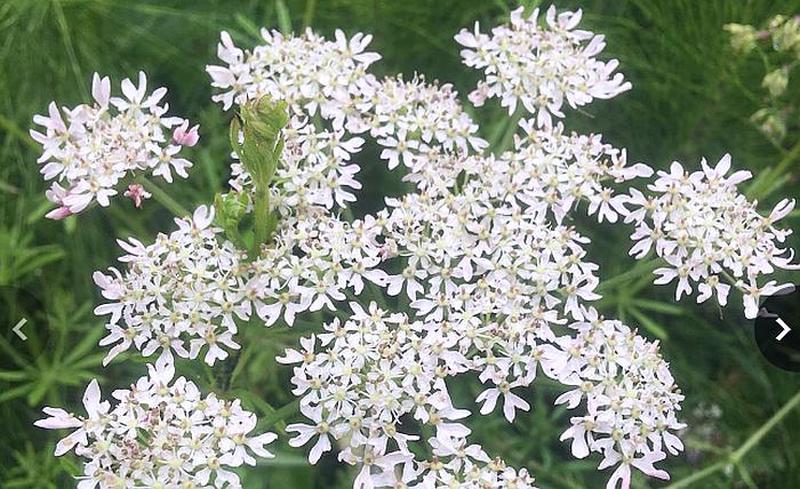
‘Ammi’ comes from the Greek word ammos, which means sand – a reference to the plant’s natural habitat. These delicate blooms are also commonly known as Bird’s nest (due to its nest-like appearance) or Bishop’s Lace (due to the lace-like umbrella formed by the individual dainty white flowers). They represent a sanctuary, which is possibly an allude to its nest-like shape. The Ammi Maju is native to the Mediterranean and Southern Europe, and available only during the months of June to September. Its dreamy white colour and intricate lacy design makes it perfect for wedding bouquets. Furthermore, they have a long vase-life of up to 10 days under proper care, giving one more time to reminisce in the memories of the wedding day.
8. Astrantia
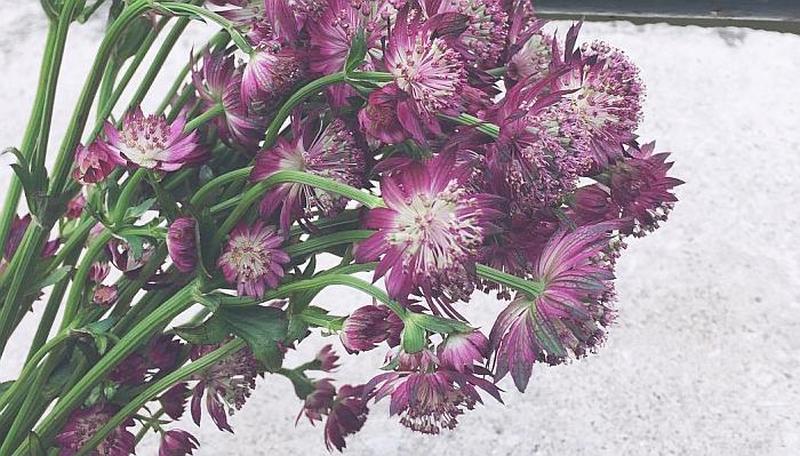
A more common name for it is the Masterwort, which is the term given to several plants that belong in the family Apiaceae (Astrantia is a genus, which is a sub-category of plants within a family). This word ‘Astrantia’ comes from the Latin word ‘Aster’, which means ‘star’. One can easily see how its name came about – the flower itself looks like a cluster of stars or a beautiful firework. In the center is a group of tightly-packed florets, and encasing it are petal-like bracts that resemble the edges of a star. This bold flower symbolizes strength, courage and protection, making them optimal as part of wedding bouquets. Even though these flowers have a vase life of 5-10 days, they can be easily dried and saved as a keepsake from one’s special day! The astrantia is sadly not available throughout the year – it best blooms from late spring to mid-summer.
10. Astilbe
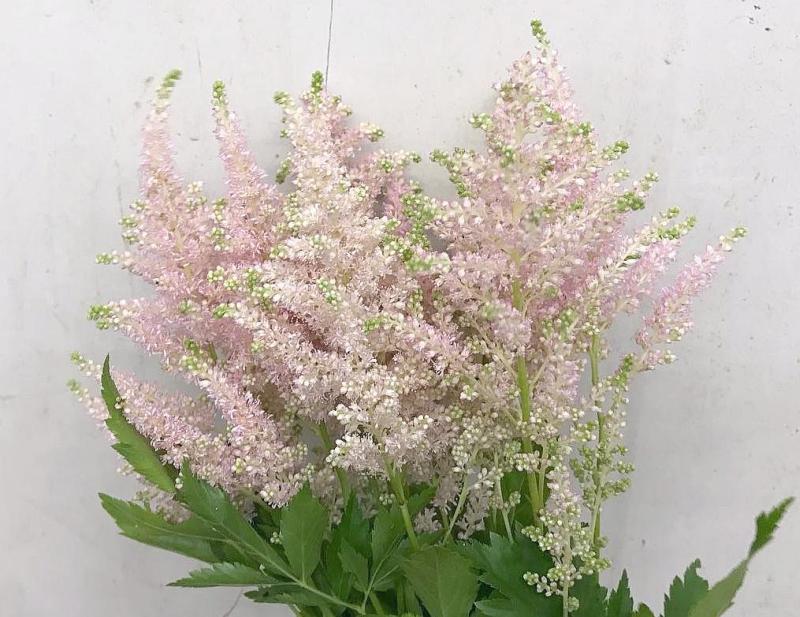
True to its form, the Astilbe is sometimes referred to as false goat’s beard (you’ll see the resemblance by turning the flower upside down). These feathery blooms are made up of upward-growing, fluffy, plume-like flowers and available in a variety of colours ranging from white, pink to red. The Astilbe is native to China, Korea and Japan, and luckily for us, they can flower over a relatively long period – from late spring to late summer. As a symbol of patience and dedication to a loved one, gifting the Astilbe conveys the message of ‘I will still be waiting’, which is a sweet and comforting message all at once. When included in bouquets, the Astilbe is often used as a filler due to its delicate look which helps to enhance the main flower. Sadly, this beautiful flower can only last about 3 to 4 days before some browning of the tips begins.

That’s all the flowers we have for you today, but we hope learning about them can help shed some light on your next bouquet purchase. While flower bouquets are no doubt a classic in the world of gift giving, do not let the comfort of tradition distract you from making your bouquet unique to the receiver. Remember, that the beauty of flower gifting lies as much in the symbolizations and message to be conveyed, as it does in the aesthetics of the gift.
Written by: Engracia Loh
Leave a Reply